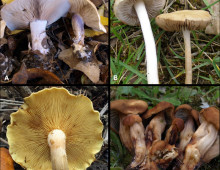Genome Calligrapher: A Web Tool for Refactoring Bacterial Genome Sequences for de Novo DNA Synthesis
Recent advances in synthetic biology have resulted in an increasing demand for the de novo synthesis of large-scale DNA constructs. Any process improvement that enables fast and cost-effective streamlining of digitized genetic information into fabricable DNA sequences holds great promise to study, mine, and engineer genomes. Here, we present Genome Calligrapher, a computer-aided design web… [Read More]

